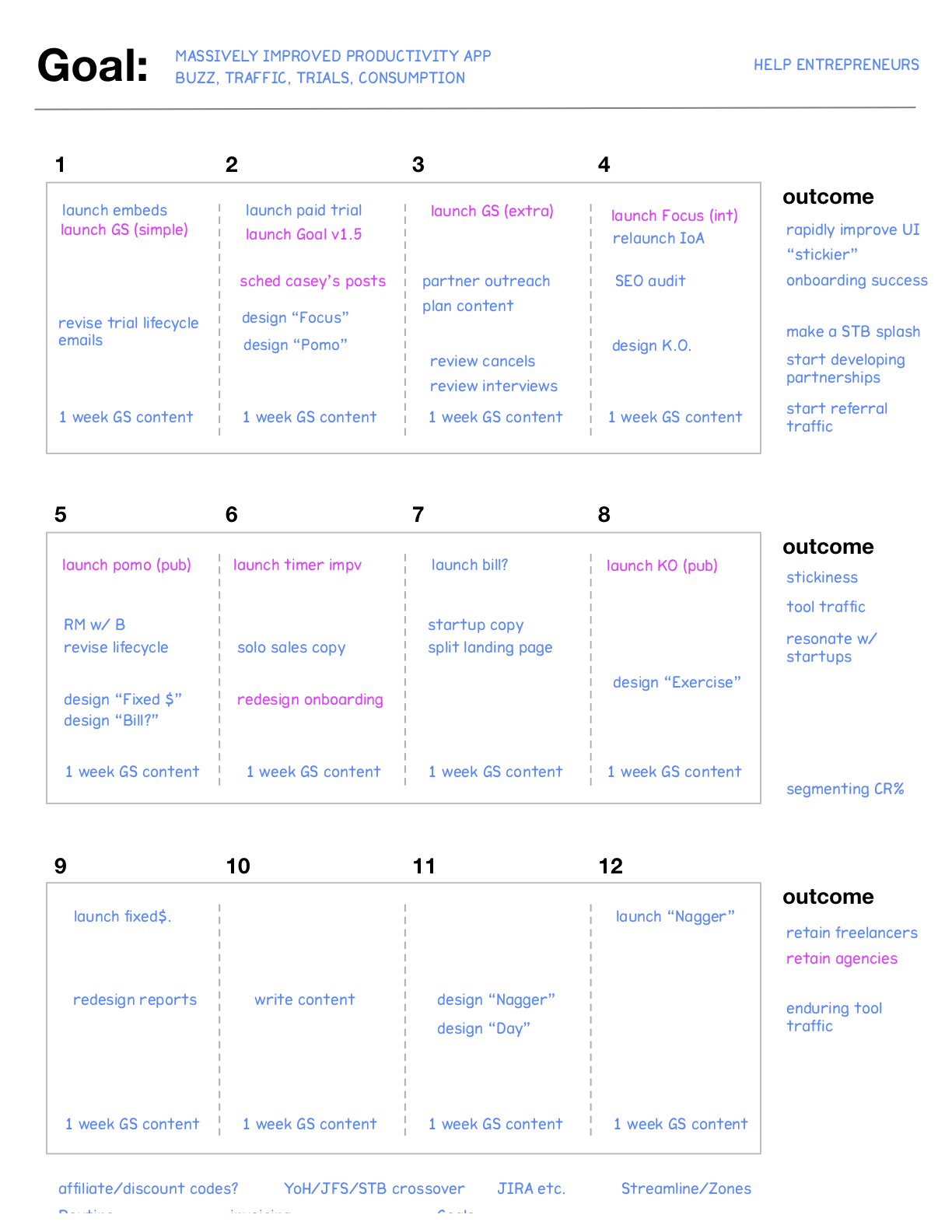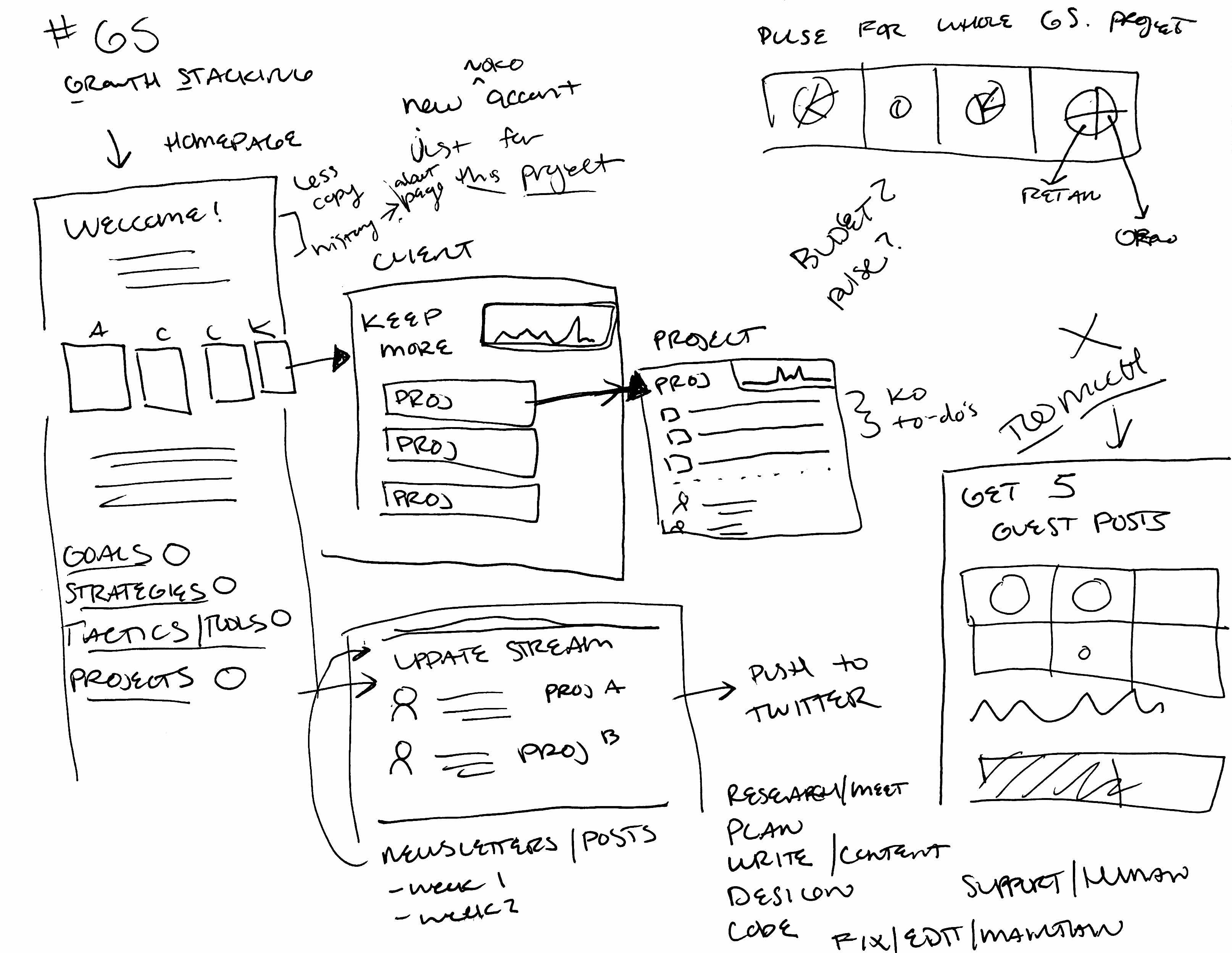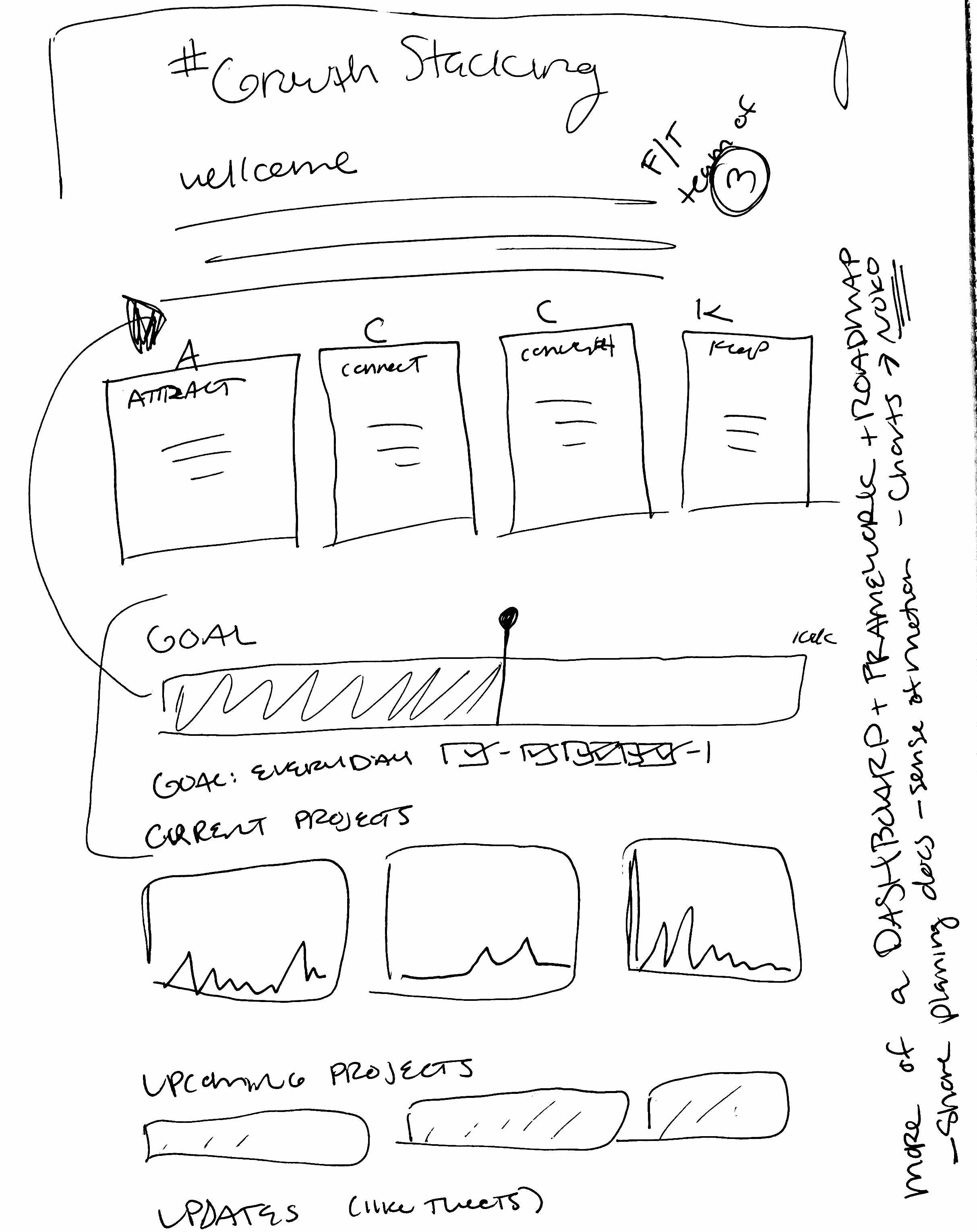Sales copy, targeting, funnels, and personalization
So, sales copy.
The thing about sales copy is that it works best when it makes your reader sit up and cry, “Hang on… they’re talking to ME!” And the best way to create that personal resonance is through what I call crispy writing — specific, concrete, vivid details.
Not ‘save time’ but ‘spend less on ‘just one more little thing’ change emails.’
Not just ‘earn more’ but ‘understand your true hourly rate by tracking and including your non-billable time spent on sales and communication’.
I’ve written a lot about landing pages and sales copy:
- 6 critical mistakes you’re making with your landing page
- How I increased conversion 2.4x with better copywriting — specifically about the current Noko sales copy
Bottom line: You can’t get that “That’s For Me!” feeling without also creating an equal and opposite “That’s NOT For Me!” feeling in people for whom those crispy details do not resonate.
You can’t make plans for your sales copy without making plans for your customers.
Here’s where I’m at with this:
Our current sales copy is currently tailored for consulting agencies.
Consulting agencies and larger internal departments are our Best Customers…
- They stay longer
- They pay more
- They’re easy to work with wrt support
Because sales copy can’t serve two masters, I chose to totally de-emphasize our solo plan, for freelancers/individual consultants.
Freelancers are the easiest customers to acquire, but they churn faster. In part because they have no inertia to fight (e.g. retraining their teams etc), in part because they go out of business pretty often, or — and this is distressingly common! — they just decide to wave their hands and do package quotes without tracking their time at all, simply… trusting… that they’re not ripping themselves off. (Sidebar: This is bad business!!)
Easy to acquire is good. Churn is bad. Result: it’s a wash.
According to Growth Math, we should ignore solo customers.
But solo customers also tend to spread Noko — they leave, sure, but pretty often they get hired into teams, and advocate for Noko internally, or they tell their friends. We’ve heard this a lot, direct from the source.
And that’s a major part of my Growth Theory for the future:
More solo plans = more long-term growth, despite short-term churn.
My other Growth Theory is capitalizing on my assets.
In case you didn’t know, I write about bootstrapping business over at Stacking the Bricks. People know me. People trust me.
Those people, like you (like me!!), would get a lot of benefit out of tracking their time.
So I plan to “borrow audiences” — from myself, and from my fellow entrepreneurs and bootstrappers and startups, like me, wherever I can find them.
Our current sales copy won’t work resonate with the entrepreneur audience.
Nor will it resonate with internal teams, our other Best Customer.
And it will not quite resonate with freelancers, being as it is focused on groups of people.
That’s my dilemma, my challenge, and the huge potential rewards.
The tentative way I’m going to solve it? Funnels.
Yeah, I can customize and segment the landing page using RightMessage — and I plan to!
Before that, though, I’m going to create super-targeted ebombs, micro-sites, and tools. Those will lead naturally to super-targeted landing pages and sales pitches that will resonate hard for them.
Rather than attract everyone to the same place, I’m going to try to attract different folks to different places.
- Solo folks? Freelancing + consulting advice, resources, and tools; one of them is gonna be a rate calculator that doesn’t suck, ha!
- Consulting agency folks? Similar to the solo folks, but bigger picture, because managing a team and keeping your pipeline usefully full is totally different from filling up your own calendar
- Entrepreneur folks? Growth talk, biz strategy, inside dirt, goals, tools (hi—you’re soaking in it!)
- Internal teams? Honestly, don’t have a plan for these folks yet; I treasure them, but am not quite sure how they end up at our door (aside from being spread by Solo folks who get hired)
It’s easy enough to lay this strategy out in a blog post. It’s much harder to execute.
Plus, of course, when people share, they’ll naturally share the main landing page — we’ll still have to accommodate that. It’s not without challenges.
That’s why I’ll be blogging about it, every step of the way.
PS: In case you’re wondering… I’ve spent 43 minutes today, so far, writing up plans like this, and I know that because I’ve been using my trusty Noko timer 😂 I’m going to set up a goal to do 45 min to an hour a day of this meta-work to be sure I’m on the right track.


